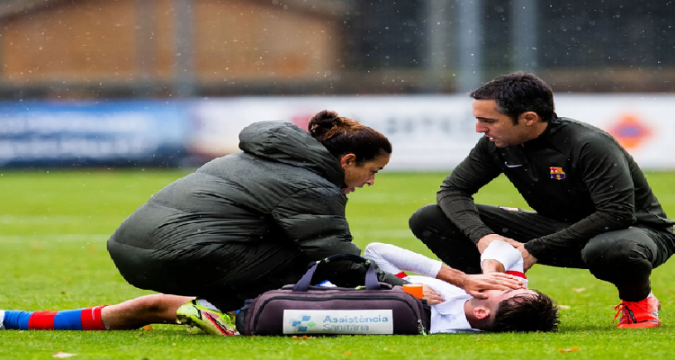
In the competitive world of football, where the physical demands on players are relentless, injury prevention and recovery are crucial for maintaining top performance and team success. The toll of high-speed sprints, powerful tackles, and frequent games increases the risk of injuries that can sideline players for extended periods. For clubs aiming to keep their athletes healthy and on the field, advanced approaches to injury prevention and recovery have become indispensable. These methods integrate sports science, medical expertise, and technology to create tailored programs that optimize player health, minimize injury risks, and ensure efficient recovery when injuries do occur.
Personalized Injury Prevention Programs
One of the core elements of advanced injury prevention is the creation of personalized injury prevention programs. Each player has unique strengths, weaknesses, and movement patterns that influence their injury risk. By conducting comprehensive assessments—including physical evaluations, strength testing, flexibility assessments, and biomechanical analysis—medical teams can create profiles for each player. These profiles allow coaches and medical staff to target areas where players may be prone to injury, designing personalized exercises that build resilience.
Strengthening routines are often focused on key areas of the body that are vulnerable to injury in football, such as the knees, ankles, and hips. Core stability exercises, balance training, and agility drills further help reduce the risk of injuries, especially non-contact injuries. Through a data-informed approach, prevention programs are refined continuously, adjusting as the player’s conditioning, strengths, and weaknesses evolve over time.
Sports-Specific Conditioning and Load Management
Football places specific physical demands on players, requiring endurance, strength, agility, and explosive power. Conditioning programs that account for the sport’s unique requirements are essential for reducing injury risk. By incorporating sports-specific conditioning, players can prepare their bodies to handle these demands, lowering the chance of strains, sprains, and other common football injuries.
Load management is a critical aspect of conditioning. Tracking each player’s workload, both in training and during matches, allows medical and coaching staff to monitor the intensity and frequency of physical stress. Wearable technology, such as GPS trackers and heart rate monitors, helps track metrics like distance covered, sprint frequency, and recovery times. With this data, coaches can make informed decisions about when players need rest, lighter training, or targeted exercises to reduce fatigue and prevent overuse injuries.
Technological Advancements in Recovery
Recovery is as important as prevention when it comes to keeping players on the field and performing at their best. Advanced recovery technologies have transformed the way players heal from the physical stresses of football, helping them bounce back faster and more effectively after both minor and major injuries.
Cryotherapy, for example, is widely used to reduce inflammation and accelerate recovery after intense matches or training sessions. This involves exposing players to extreme cold temperatures, which constrict blood vessels, reducing swelling and pain. Hyperbaric oxygen therapy is another advanced technique that enhances healing by increasing oxygen levels in the blood, promoting tissue repair and reducing recovery time.
Compression garments, massage therapy, and manual therapy also play an important role in recovery, as they increase blood circulation, reduce muscle soreness, and aid in the removal of lactic acid buildup. For injuries requiring surgical intervention, rehabilitation programs now incorporate progressive techniques, such as functional movement drills, proprioception exercises, and gradual reintroduction to training, to safely reintegrate players.
Injury-Specific Rehabilitation and Return-to-Play Protocols
When an injury does occur, a well-structured rehabilitation plan is essential for getting the player back to full strength and avoiding re-injury. Advanced rehabilitation protocols consider the injury’s specifics, the player’s position, and their overall conditioning to create individualized recovery plans. Physical therapy and rehabilitation exercises focus on restoring strength, flexibility, and range of motion while avoiding overloading the injured area.
Return-to-play protocols are increasingly data-driven, assessing not only physical readiness but also psychological confidence. Reintroducing players to game-like scenarios in controlled environments allows medical teams to evaluate their readiness before they return to full match intensity. Through a phased approach, starting with individual drills and progressing to team training, players can safely return to competition with minimized risk of reinjury.
Nutrition and Recovery Support
Proper nutrition is another cornerstone of injury prevention and recovery. The right diet helps players maintain energy levels, promote muscle repair, and reduce inflammation. Sports nutritionists work closely with medical teams to create individualized nutrition plans based on each player’s requirements, training intensity, and metabolic rate. Emphasis is placed on consuming anti-inflammatory foods, lean proteins, and nutrient-dense carbohydrates that support muscle recovery and immune function.
Hydration also plays a significant role in preventing muscle cramps, maintaining focus, and supporting recovery. For players recovering from injuries, specific nutrients like collagen, omega-3 fatty acids, and amino acids are often recommended to support tissue repair and speed up healing.
Psychological Support for Injury Resilience
Injury recovery isn’t only physical—it’s also mental. The psychological impact of injuries can lead to stress, anxiety, and even a fear of re-injury, which can influence a player’s performance upon return. Sports psychologists are essential members of advanced medical teams, providing mental resilience training that helps players maintain a positive mindset and overcome mental hurdles related to injury.
Techniques like visualization, goal-setting, and cognitive-behavioral strategies are used to build mental resilience. These approaches help players manage their emotions, stay motivated throughout recovery, and regain the confidence they need to perform at their best once back on the field.
Advanced injury prevention and recovery strategies are essential investments for football clubs dedicated to safeguarding player health and ensuring team success. By focusing on personalized prevention programs, cutting-edge recovery technology, data-informed rehabilitation protocols, and holistic health support, clubs can significantly reduce injury risks, enhance recovery, and foster long-term resilience among players. Football is a demanding sport, but with advanced medical support, teams can keep their athletes fit, focused, and ready for the challenges ahead, ultimately contributing to consistent performance and achieving peak success on the pitch.